If you really would like to get better digiscoping photos, then here are a few points and some base-line knowledge that will hopefully help you understand what you need to do and why.
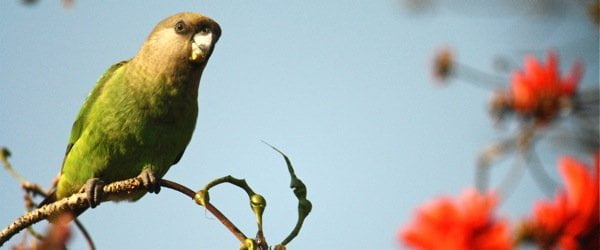 Brown-headed Parrot (Poicephalus cryptoxanthus) digiscoped with Swarovski STM80HD, UCA adapter, and Canon 1000D
Brown-headed Parrot (Poicephalus cryptoxanthus) digiscoped with Swarovski STM80HD, UCA adapter, and Canon 1000D
A couple of weeks ago, I wrote a 10,000 Birds blog post about how to make digiscoping really easy – forget about photos and just take video. I still stand by that advice; if you want to do digiscoping the really easy idiot proof way, use video. But if you have a decent sense for photography and some time to practice, then digiscoping photos can be wonderful fun to take.
1. Choose an appropriate camera for your needs
There are plenty of cameras out there that will work for digiscoping and new cameras are being released every month, the variety is staggering. Small compact cameras like the Canon S95 and Canon IXUS300 (aka SD4000) take some nice photos, focus well, have great HD video functions and – critically – allow the digiscoper a lot of freedom in adjusting controls. When choosing a compact camera, you want something that will work with limited vignetting (this generally limits the cameras to about x4 optical zooms although many 5x work well), has a good sensor and allows you to adjust things like aperture and ISO manually.
System cameras, like the Panasonic Lumix G2, for example, tend to have significantly larger sensors than typical compact cameras, but because they lack a flipping mirror, they can be a great deal smaller than the average DSLR. They also use contrast detect autofocus, which means that if you use a suitable objective lens (in this case a 20mm pancake), you can use autofocus to help you (finger-press autofocus on the touch-screen of the G2 and GH2 in this example).
The success of entry-level DSLRs over the passed few years has meant that many more people are trying to use DSLRs for digiscoping. The larger sensors can potentially produce better image quality, and the optical viewfinders can be great for finding, following and focusing on moving targets. BUT, the larger sensors need more light (ie more sensitive to camera shake), you are forced to always completely manually focus, and they suffer from mirror flap (introducing shake in to the system). I almost always use a DSLR in my digiscoping, but I do it aware of the compromises.
2. Reduce camera shake and get everything stable
Camera shake is the source of all evil. Anything that shakes your camera or setup will massively increase the risk that your photos are blurry. This includes things like wind, wobbly tripods, people moving in the hide, your finger on the shutter release, flapping DSLR mirrors, unstable adapters…
Make sure you are using a stable tripod (best carbon fibre: light weight and vibration-dampening), or better yet, a bean bag on a solid surface (although this will limit your mobility). A stable adapter will also do wonders.
3. Switch to Aperture priority mode
Once your camera is physically set up on an adapter behind your telescope, I would suggest switching to aperture priority mode (usually A or Av on the mode dial). Then adjust the aperture to the smallest f number; this will give you the biggest opening and let the most light in. The more light let in, the faster the photo can be. The faster the photo, the less likely you are to get blurry photos from camera shake. Your camera does not know you have artificially increased the focal length to 1000+mm, it still thinks you are taking a photo of your dog and kids, so help it out by telling it what to do (the same goes for ISO).
4. Choose your ISO
A small ISO number will allow your camera to take the best quality photos it can, but it will need a slower shutter speed in order to achieve this. If you choose a higher ISO, the images will be more grainy (noise), but you will be able to take faster photos. If your camera is giving you a shutter speed of 1/100s at ISO100 and you change to ISO200, you should now have a shutter speed of about 1/200s, but with somewhat more noise.
What ISO is appropriate, will depend on what you think is acceptable in your images (a personal thing), and how well your camera performs at higher ISO. Digiscopers will typically use a compact camera at ISO 200 or less, a system camera (or entry level DSLR) at about ISO 800, and top full-frame DSLRs at ISO1600 or more.
By leaving the ISO on automatic, you are once again allowing your camera to think the dog is about to be photographed. Resist the temptation and get to know your camera and what settings your camera needs to work well for digiscoping.
5. Get the focus right
If you are using a compact camera or system camera, find your photographic subject on the screen (or through the electronic viewfinder) and focus the scope as sharp as possible. Setting your compact camera to macro mode will help make the camera’s job easier. Now, half-press the shutter release button to allow the camera to find focus. When it has found focus, it should show a little box where it has focussed. If this is where your bird/subject is, you can now SLOWLY press through all the way. If you lift your finger off between half-pressing and pressing all the way through, the camera will loose focus.
If your camera has incorrectly focussed on the great big goose sitting behind your Purple Sandpiper, keep your finger half pressed (to lock focus), manually focus the scope on the sandpiper, and press all the way through. Many of the Canon compact cameras, for example, have a handy little digital zoom “magnifying glass” that will show of the point the camera has chosen to focus on – this is a great help to double-check your focus is correct.
With a DSLR, you can either focus manually using the optical viewfinder (with a little practice, this becomes rather easy), or if the subject is relatively stationary, using LiveView by zooming in digitally and checking that the bird is super-sharp exactly where you want it to be sharp. If you are in LiveView in a better Canon DSLR, you can now press through slowly to take a whole series of photos WITHOUT the mirror flapping (for some bizarre reason, Nikon have not thought to integrate mirror-lock in to their LiveView function). No mirror flap = less vibration = better chance to get a sharp photo.
6. Burst mode, electronic releases, cable releases…
Set your camera to burst mode and take lots of photos in a row. One is likely to come out. When you get home you can throw away all but the very best photos. It costs nothing more to take 4 photos instead of 1 and even the best digiscopers throw away the majority of their photos. There is no shame in it, and practice makes perfect.
If you can, try using an electronic or cable shutter release – they take your hand off of the camera and reduce yet another source of camera shake.
If you are going to use a direct finger press on the shutter release, push through slowly and evenly. Try to do it as gently as possible. I see tons of people doing all the other things right, they have great equipment, a wonderful bird in front of them and then they press they attack the shutter release button like a pimple or that bubbly blister packaging DHL uses. Pop pop pop.
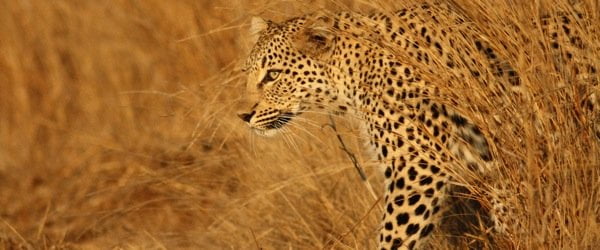 Leopard digiscoped with Swarovski STM80HD, TLS800 adapter, and Canon 1000D
Leopard digiscoped with Swarovski STM80HD, TLS800 adapter, and Canon 1000D
I hope this all helps. If you have specific questions, feel free to write them in the comments and maybe I can address them in a future blog post.
Happy digiscoping,
Dale Forbes





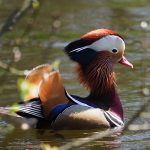

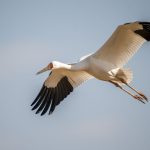

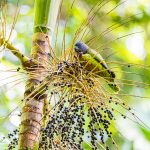
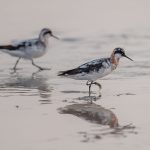
Dale, I really don’t know why I even bother reading your digiscoping posts. They are just frustrating: excellent equipment that I don’t have, amaaazing places I’ve never been to, brilliant pictures of fascinating species I have either never seen or only seen a long long time ago…
Man, give me a break and digiscope some domestic pigeons, ey?
🙂
🙂
Well, maybe I meant to say your posts are little gems. Just maybe…
Dale, I have to agree with Jochen. Great pictures but great equipment too. Is it your ability to take pictures or the equipment. My guess it’s your ability to take pictures because it sounds like you know what your talking about. But lets see what can be done with a simple Kodak. Doesn’t have to be a Kodak that is just the most common everyday camera. Now I’m going to go out and see what I can do with my simple camera using your advice. By the way thanks for the crash course. Now I’m excited about taking wildlife pictures again. If you are curious about what I’m using I have a Kodak DX7590 and a Canon Rebel XT.
Dale, really useful post. I’ve never done much digiscoping but now I have the tools to try. Great job and nice hippos! Makes me homesick…
Dale, Wonderful explanation of digiscoping. I have the Swarovski scope, the carbon fiber tripod, and a Nikon point-and-shoot camera. And my pictures are still not sharp. You’ve offered some very good tips and explanations–I will use them to hopefully help me take sharper digiscoped pictures. Thankyou!
@ Jochen, lol you are funny. but then again you have been some pretty cool places yourself. Now and again when I get back to South Africa, I try to do a few more videos and take lots of photos – the opportunities are just all over the place and I took a good 7000 digiscoping photos the last time I was out there. Places don’t seem so extravagantly wild and crazy when you grew up there.
@ Jochen (again). I’ll take that as a compliment. I think. You coming to this part of the world again any time soon?
@ Doug, I have taken many thousands of digiscoping photos with my cheap little Canon A590IS. It cost me $100 and did a great job. I now have access to lots of bigger toys and I am willing to shoulder the weight, so I tend to carry a 7D or 5DmarkII about, but they are certainly not necessary to take nice photos and have a whole lot of fun. You have a Rebel XT (350D) which is very similar to the 1000D I was using in many of these videos and the two photos here.
Many moons ago I taught underwater photography to beginners. The thing is that most people thought you needed to have a great big fancy pro camera to take nice photos and that that was why their photos were so poor in the beginning. But the thing is, once you learn the basics, and have some practice, most people can produce some really nice shots with the simplest of cameras. And you put a cheap little camera in the hands of a pro and they will churn wonders out. Digiscoping is much like this – base knowledge and practice make a huge difference, but at some stage one’s skills will outgrow the quality of the equipment. This is the time to invest in something that lets you fly… Happy digiscoping!
@ James, thanks I hope this helped a bit. how often do you get back to the bush?
@ Lesley, good luck – practice makes perfect!
@Dale: true, I have seen some neat corners, just not recently. Sadly I have no immediate plans to get back to the Innsbruck area, but as our day out was waaaay too short, you’re definitely on my radar! However, I’ve heards rumours you’ll be in the Heidelberg area in February to digiscope breeding peregrine falcons and eagle owls (hint hint, wink wink 😉 ).
And my second comment was definitely a compliment. First of all, your videos are nicely done and that view over the Olifants alone is breath-taking – not to mention having lions in it.
@ Jogi, maybe one day you can bring your son Rodeln (and we can look for Tengmalms Owl). To do anything more than fighting fires in Feb will be a challenge (a lot going on), but maybe later in the year.
That view over the Olifants (from Olifants camp) is one of my favorite in the world – wide open savannas, baobabs in the background, and you never know what is going to pop up. I photographed 5 eagle species that morning from the camp, and that was in Winter without any of the migrants!
@Dale. Jogi??!! That’s fantastic. I haven’t been called Jogi since – what – I was 10 or so, and even back then it was only my dad and the full name was Jogibär (Jogi Bear)! 🙂 🙂 !
Chances are indeed very good that I will return (with son and wife) sometime in the next few years (who knows, no immediate plans but maybe even this year?), just nothing fixed yet.
As my wife, who grew up in the flatlands, considers cable cars to be torture instruments designed by sadistic homicidal nutcases and my son gets travel-sickness easily, you will remember holidaying in the alps is no easy feat for me. We’ll see. I CERTAINLY won’t be taking my son to this friggin’ indoor playground where he 8and subsequently I) got the ultimate stomach flue.
😉
Cheers, Dale!!
@Dale, What scope are you using? I’m still undesided wether to get a straight eyepiece or an angle eyepiece. Is one easier to use for digiscoping? Where can one purchase the balance rail?
Larry
@ Jochen, don’t know when it first occurred to me, but when I saw your name on my blackberry last night I immediately thought of Yogi Bear, but thought I’d use the German spelling. I can understand how the mountains passes and cable cars can be a horror for flat-land people (don’t go up Innsbrucks Nordkette to Seegrube!) but there is plenty of fun that can be had going Rodeln in the area. No kids playgrounds for either of you!
@ Larry, straight or angled is a common question. Here is a quick answer: if you mainly do birding and would like to take a couple of compact camera photos every now and again, I would seriously suggest an angled scope (easier to observe and nicer to operate from the compact camera’s screen).
If, however, you would like to get more seriously in to digiscoping and would like to use a DSLR – particularly with something like the TLS800 optical adapter – then a straight scope is a wonder for finding and tracking flying birds and using the whole system like a great big telephoto lens.
Feel free to send more specific questions if you would like…
Thanks for the crash course. I have some specific questions about focusing. I uae a Vortex Razor HD with the adapter that screws into the filter thread. My Nikon D3000 does not work well (kit lens) and is too heavy ans so I am thinking abot getting another camera – but which one?
I want to use AF and so will need to get a lens that is internal focusing. (This is possible.) My confusion is about AF and, inparticular, continuous AF.
The Af cameras I have looed at, leave the focus at the position of the last photo. Hence, if one first gets the best focus using the scope and then usea AF, it may be that the camera focus is at one limit of its range (closest or furthest away). Were this the case, the AF might not be able to do its thing.
To avoid this problem, one would have to set the camera to manual focus, set the focus at some middle positoin, set it back to AF, and then proceed with the focus on the scope followed by AF.
This situation would be made worst were one using video and continuous AF. Am I missing something?
I tried the Pan GH2 with the 14mm-42mm kit lens and could not avoid vignetting. I tried the Oly 14mm-42mm kit lens and vignetting went away about 25mm – great! However, the Oly lens is not internal focusing and so is not suitable for my setup. Do you know of a lens that might work with the Pan GH2?
Cheers,
Robin
@Robin,
Your Nikon D3000 can take some great photos (it could be said that it is something of an equivalent of the little Canon 1000D I was using in many of the videos), but you will definitely not have autofocus.
I have only seen a pre-production model of the GH2 and have not had time recently to play with the final edition, but in the one that I tested, I was very impressed with how quickly and accurately the autofocus performed with the 20mm pancake (vignetting free on my Swarovski 25-50x wideangle). The bigger (more expensive) 45mm macro also worked well and was incredibly sharp. See my initial review of the GH2 for digiscoping here:
http://alpinebirds.blogspot.com/2010/09/new-panasonic-lumix-gh2-for-digiscoping.html
My two favorite compacts at the moment are the Canon S95 and Ixus300, both of which have acceptable focussing, but it is always important that the scope be as well focussed as possible before the camera starts to do its work. Playing around with a German digiscoper friend (http://ozellus.de/) we seemed to think that the more work the camera has to do in order to focus the image (ie, pushing to the limits of its capacity), the narrower the depth of field. We need to look in to this more, but it is somewhat of a strong gut-feel at the moment.
This all brings me in a round-about way to what you were saying about how the cameras autofocus and having to return to manual focus – all excellent points and ones which I have grappled with for a while without finding a really good solution.
So far, the fastest and most reliable digiscoping autofocus I have personally seen has been with the GH2 – and I liked the 20mm pancake. Focus the scope quickly, tap the screen on the bird’s face (or neck) and press the cable release. If you want to follow birds in flight, I would suggest switching to full manual focus and to use the viewfinder, following and focussing as you go.
Feel free to answer with more questions and I will see if I can help.
Happy digiscoping,
Dale
@ Dale, I’ve recently been using the Canon T1i & trying to learn how to use it. I even bought the dummies book to better understand all aspects of it. I also have a Olympus C750 Ultra Zoom. Which would be a better choice in your opinion?
I think I’ve settled on an angle scope, just for ease of use for watching birds in trees. Is there a better choice in objective lens, i.e. 60mm, 77mm, 80mm, 82mm? Or 40X, 60X, 80X etc.? Swarovski, Zeiss, Eagle-Eye, Leica, Pentax, who makes a better scope? I don’t know of a place here in the states to sample all varieties of scopes in one place. I was wondering what scope you were using in the Crash Course videos.
Larry Johnson
@ Larry, the Canon T1i (500D) is a nice camera – it is a nice step better than the camera I chose to use in many of these videos (Canon 1000D / Rebel XS), but is still a good deal smaller and lighter than the DSLRs I normally use (Canon 7D and 5DmarkII – as in the shutter speed video).
The Olympus C750 and other super-zooms will typically not work for digiscoping as they need extremely long eye-relief, something that is a major disadvantage for normal observation.
Are you interested in digiscoping as a means for long focal length photography? or are you more in to observation and would like to also take some photos?
If the former, then I would suggest a Swarovski STM80HD with a TLS800 adapter: http://alpinebirds.blogspot.com/2010/02/tls800-telescope-photography-system.html
With a Swarovski scope, you are guaranteed an excellent state-of-the-art quality product, minimum weight and great back-up service (and I am not just saying this because I now work there – I have always loved the products). A straight scope (the S) and the optical adapter will give you both excellent image quality (comparable with a super-telephoto lens) and the straight-through handling of a regular objective (though you will need to manually focus). I would suggest a larger objective diameter (80mm) to let more light in and get faster shutter speeds. True HD optics will reduce chromatic aberration (purple or green fringing), which can be disturbing in photographs. If you are out in the field and wish to switch to observation, you can quickly put a wide-angle zoom eyepiece on – something I do all the time.
If you are more in to observation but also want to take some photos, then I would suggest an angled scope, something like the Swarovski ATM80HD with a compact camera, like the Canon Powershot SD4000 or S95. The first only costs ~$250, takes some nice photos and great HD video (the shutter speed video was filmed with its baby sister the SD1400).
Video digiscoping really is the easiest way to get in to digiscoping and get some nice results: http://10000birds.com/video-digiscoping.htm
Hey Dale,
Have you ever used a Panasonic GH2 for digiscoping with a swarovski optik scope? I have this camera and I am finding it a nightmare to find a scope that it will work with.
Maybe you could try it sometime if you get the time.
Recently i have purchaged a system camera Sony Nex 3 and a Pentax 40/2.0 lens. I’am now waiting for the right adapter between them , which push me to use the the lens manually. But anyway….
You said :Once your camera is physically set up on an adapter behind your telescope, I would suggest switching to aperture priority mode (usually A or Av on the mode dial). Then adjust the aperture to the smallest f number; this will give you the biggest opening and let the most light in….
Those are the settings of the camera. But ….how to handle with the settings of the lens on my Sony camera. I mean the zoom and the aperture . Both wide open ? Despite the settings ( f.e. A )of the camera.
I hope you will give me an answer understand my question.
greetings
Herman van der Klis
h.vanderklis@uu.nl
@Chris, I have only tested pre-series GH2s for digiscoping, and I wrote about it here: http://alpinebirds.blogspot.com/2010/09/new-panasonic-lumix-gh2-for-digiscoping.html
I hope that helps.
@Herman, if I understand you correctly, then I would recommend you open the camera lens’ aperture completely (be that from the camera or directly on the camera’s objective). Using as little magnification as possible would give you the most light and the fastest shutter speeds. Have I managed to answer your question?
happy digiscoping,
Dale
Sure you did , thanks a lot.
Herman van der klis
Hi Dale,
Man, I am in love with your website. Your video’s are very clear and I’ve learned more in those few minutes than the last months in the field: THANK YOU!
I am about to bye a telescope with which I plan to do a bit of digiscoping. Would you care to tell me what you think about the Leica televid 65, knowing that I have a leica D-lux 4 and a Nikon D90 to digiscope with.
I am a small girl, not planning to walk for miles with too much weight on my back lol.
I’d love to hear what you have to say 😉
greets, Heloise
Hi Heloise, I’ve sent you an email…
@Dale, seems you have a secret looking for you lol.
Hey Dale I just Modded my GH2 to increase the bit rate. It now produces 55 Megabytes a second in 50 fps mode and 132 Megabytes in 24p mode. One thing I noticed the second I tested the Raw video is the quality is 500% better. It gives that nice holiwood grain video look. I did some long video shots with the 100-300mm lense and whats great is you can take snapshots or screen caps of the Raw video. The images are very useable and what I am yet to find out is how it works out with digiscoping. I am yet to get a Spotting scope and test it with the hack. I should expect it to look fab.
You need a fast memory card though but you can go back and forth from the original firmware and the modded one. As the GH2 uses RAM rather tham EPROM chips.
Interested??
Hi Dale,
I am sorry, maybe something went wrong, but your email didn’t reach me 🙁
greets Heloise
@Chris, sounds very interesting…
@Heloise, I have re-sent it – maybe your spam filter got my original email.
@Author
Hello,
You have mentioned in your post about S95 being a good compact camera for digi-scoping. Do you have any pic of S95 setup with telescope. What adaptors do i need? S95 doesn’t have filter threads.
Thanks
Hassan
@ Dale…
Currently using a Brunton 20-60 80mm EDW Angled scope & I want to combine my Canon T1i with it but I don’t know which DCA to use. My non removeable rubber eyepiece outside diameter is 50mm. Do you know which DCA I need? Also, you mentioned in item 6 above to set the camera to BURST mode. Is it called something else on the T1i or I guess I’m not using the right settings. ISO is @ 1200, AV f set to 1.8 & I’m using a 50mm f/1.8 lens. Thanks for your time.
Hi, I’m just begging, borowing and ebaying kit to go digiscoping. Are you saying that a DSLR will not work with an angled scope because the LCD is off? Thanks
@Jerry: It is very difficult to digiscope with an SLR and an angled scope. The weight of the camera puts lots of stress on the adapter that you use.
@ Jerry…
I’m using a Canon T1i/500D on a Brunton 20-60x80mm angled scope & it works fine. I bought an adapter on eBay that connects directly to body of camera. With the setting on aV I leave the lcd on & the only problem I have is glare from the sun which is an easy fix.(ordered a hood for lcd). I’m still playing with the settings but other than that, all ok.
Thank you both foryour helpfulcomments and speedy response. I’m the type who trys to run before walking. I have bought a Canon 450D but don’t collect it for a couple of weeks, (relatives in London). Anyway from the spec’ and without the lense I believe it is one of the lighter models. In the meantime I have bought a Vanguard Scope 20x80x80 with an angled eyepiece. I was concerned from some comments about compacts working OK but DSLRs would not due to not being able to view the picture that would be taken? Now impatient to try it all out. Thanks again. (A lense hood is on santas list – affordable for my family members )
@ Jerry
I purchased a DSLR camera mount for my Canon T1i from ynoshk(22753) on eBay. It only took a week & a half to get to the midwest from China. The mount connects straight to the camera body & since I’m using it on my angled scope, I don’t believe it adds too much weight to the scope. The reason I got this type is because I fits over my 2″ scope eyepiece. Let me know what happens.
Larry
trplduece@gmail.com
Larry, thanks, sounds good. I will let you know how I progress.
You asked about adapters,,,I already had the Swar DCA and added an adapter for point and shoot by Optics4birding for about $70 delivered to mate them to my S95. Just starting to work with it.
Love the info. Just got a Celestron spotting scope and am using it with my Sony a300 DSLR. This camera only works in manual mode attached to the scope with a T adapter. Slowly I’m figuring out how to set it up and your advice has helped. One problem I have is that the image in the viewfinder, and the picture, have a black “halo” around the edges of the picture. I can’t seem to find what I’m doing wrong but there must be some stupid simple trick I’m just not getting. Any advice.
Dale:
I appreciate the information. I wish I had my set up when I went to Nairobi for my son’s wedding. However, I am new to digiscoing. I just purchased a spotting scope and adaptors for my Canon DSLR. I was wondering where you obtained the rail mount, or did you make it? I have not been able to google one that looks like yours.
Thanks,
@William, this is the current version of the spotting scope rail http://www.swarovskioptik.com/nature/product-accessories-c210206/spotting-scope-rail-p5006338
Dale,
I realize I am late to this discussion, but hopefully you can help me out.
I know nothing about photography (it is my wife’s hobby) but am trying to surprise her with a digiscoping setup. I have a Barsk 20-60x60mm spotting scope that I would like to pair with her Canon 7D and 5D mk III.
From what I can find, I need a “T” adapter and then some other stuff, but I am not sure if I do need the “T” adapter, or what the other stuff might be.
Could you tell me what it is that I would need to pair up either of these cameras with this spotting scope?
Thanks,
Eric